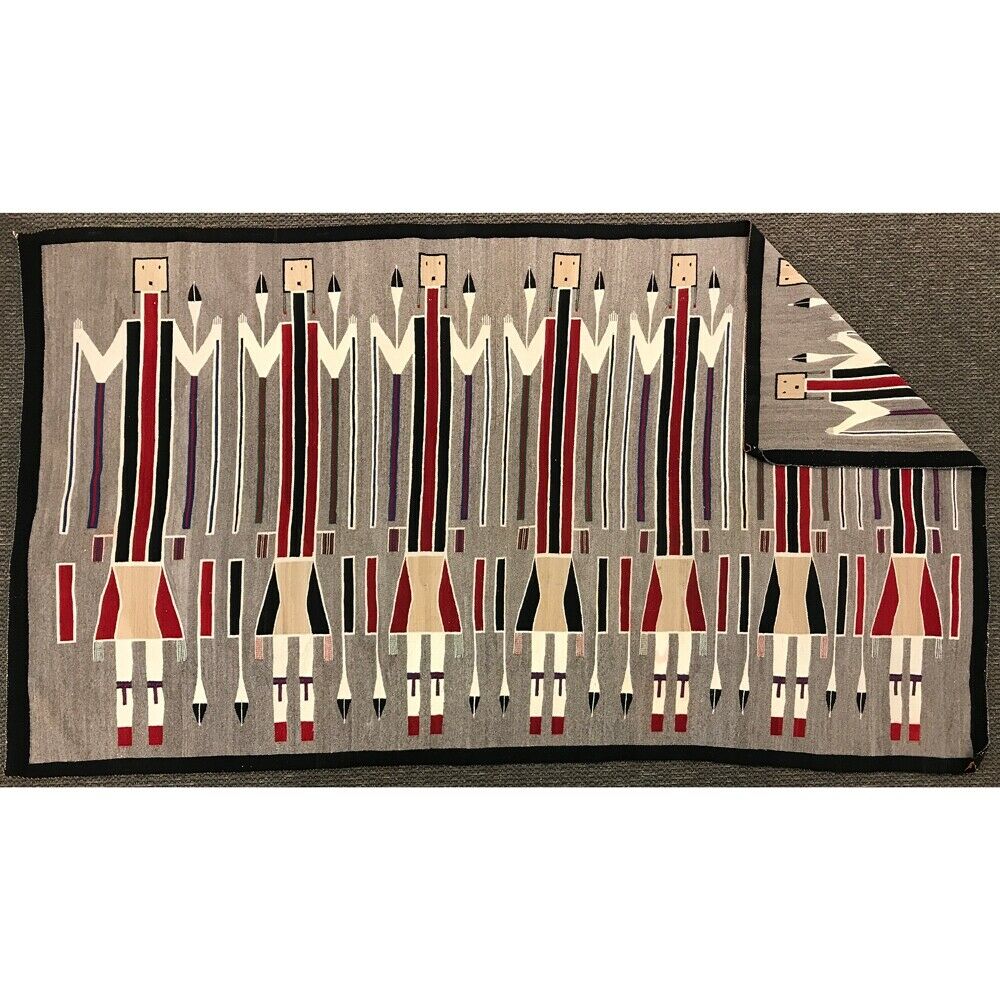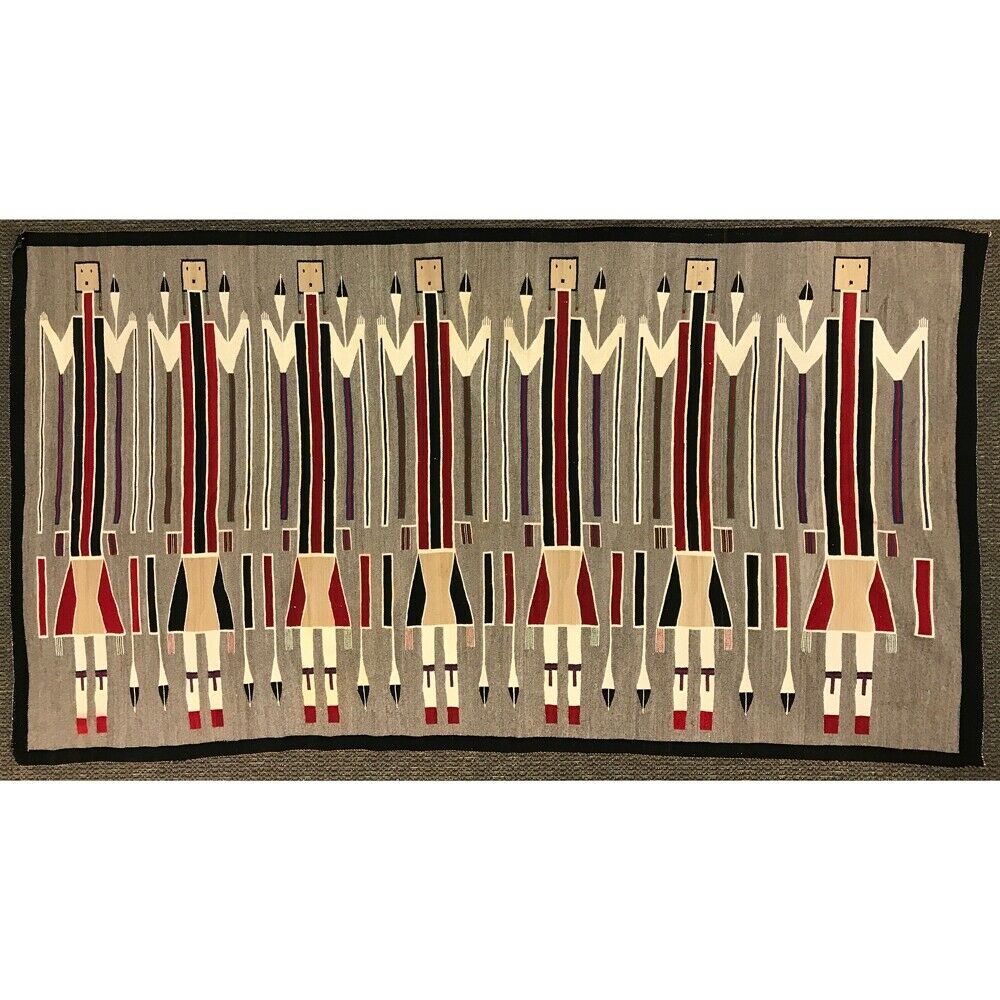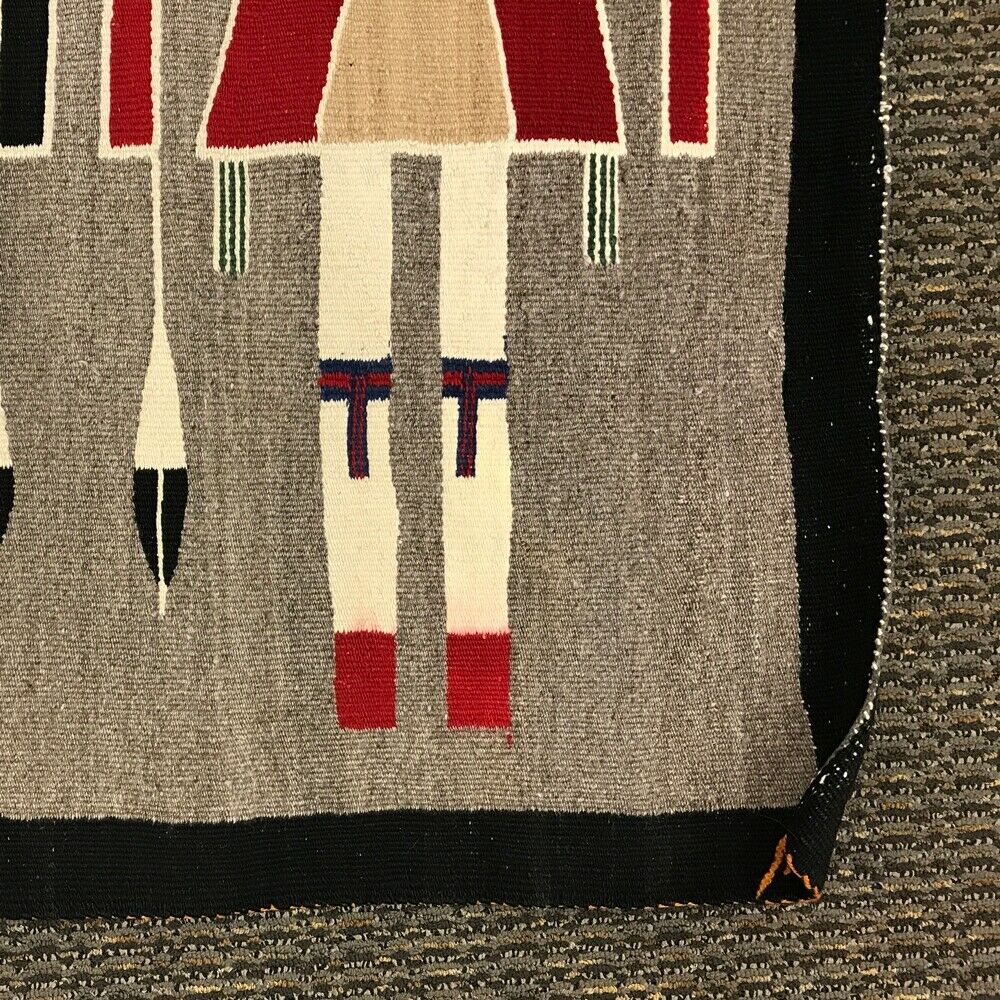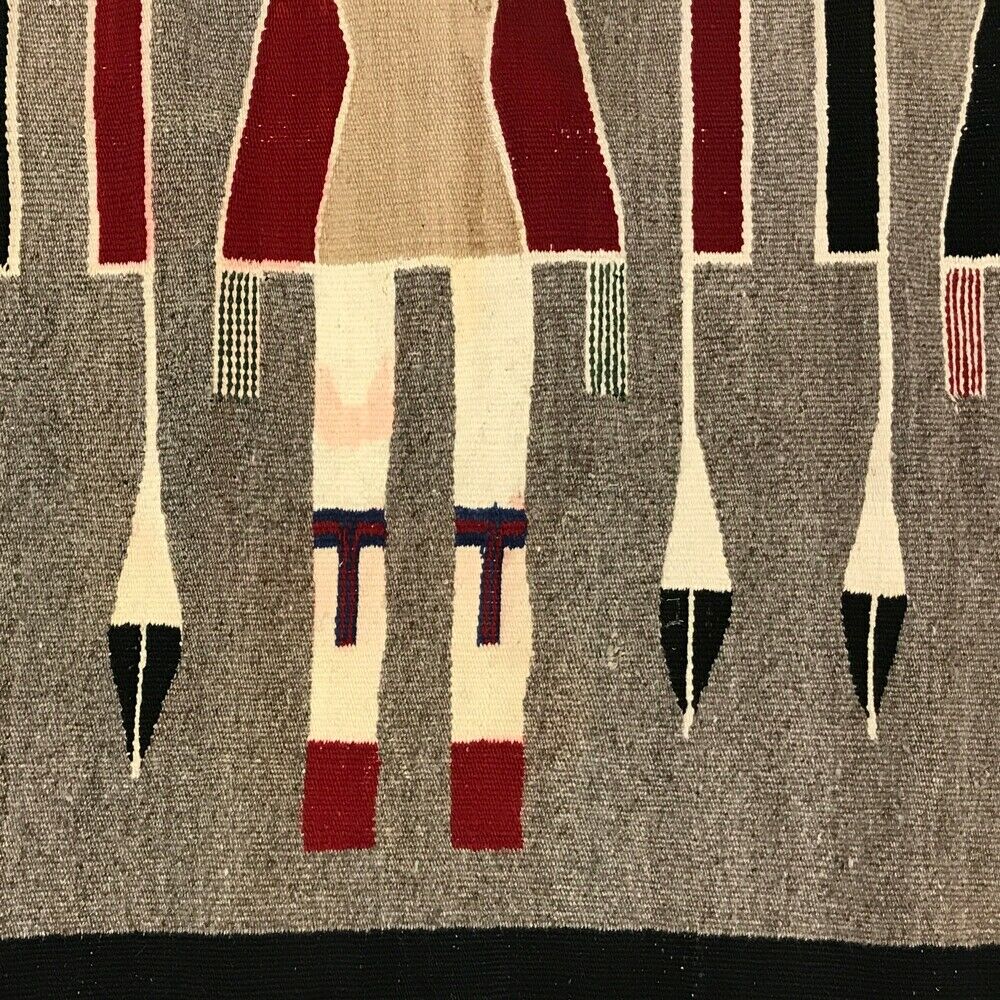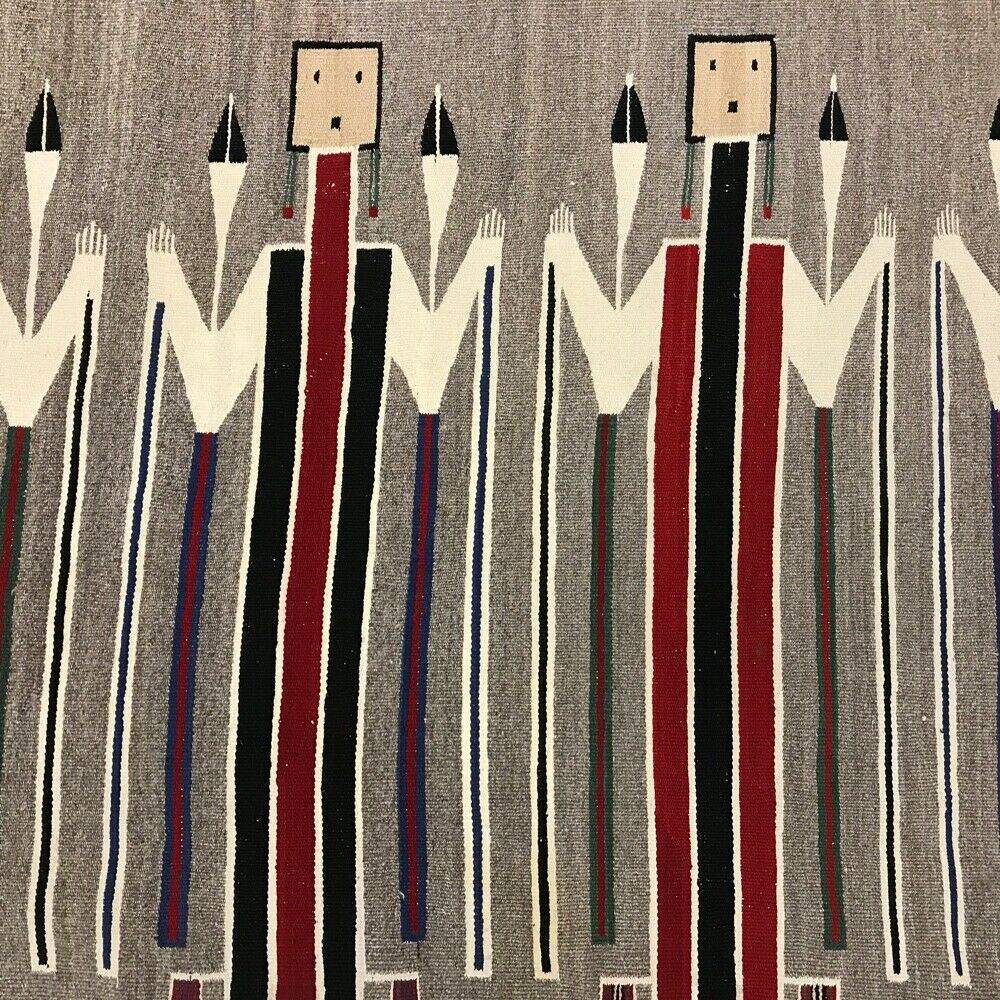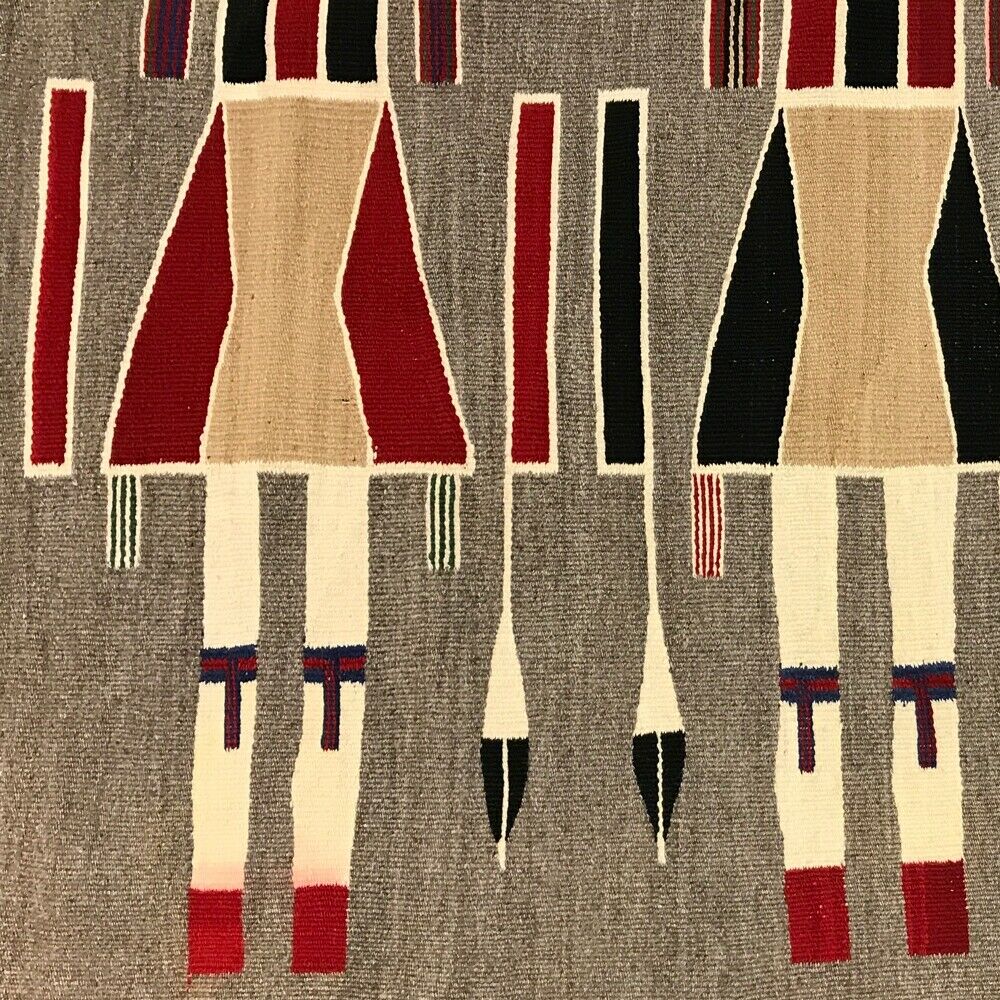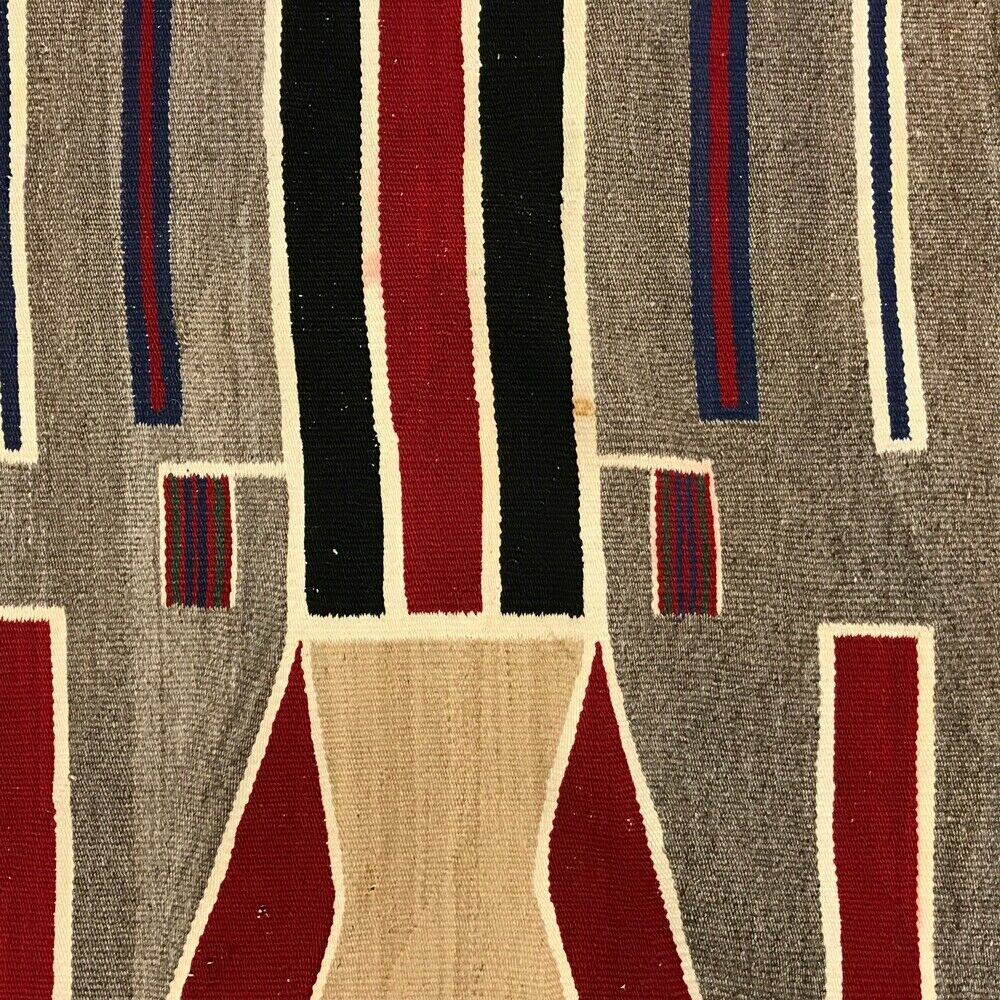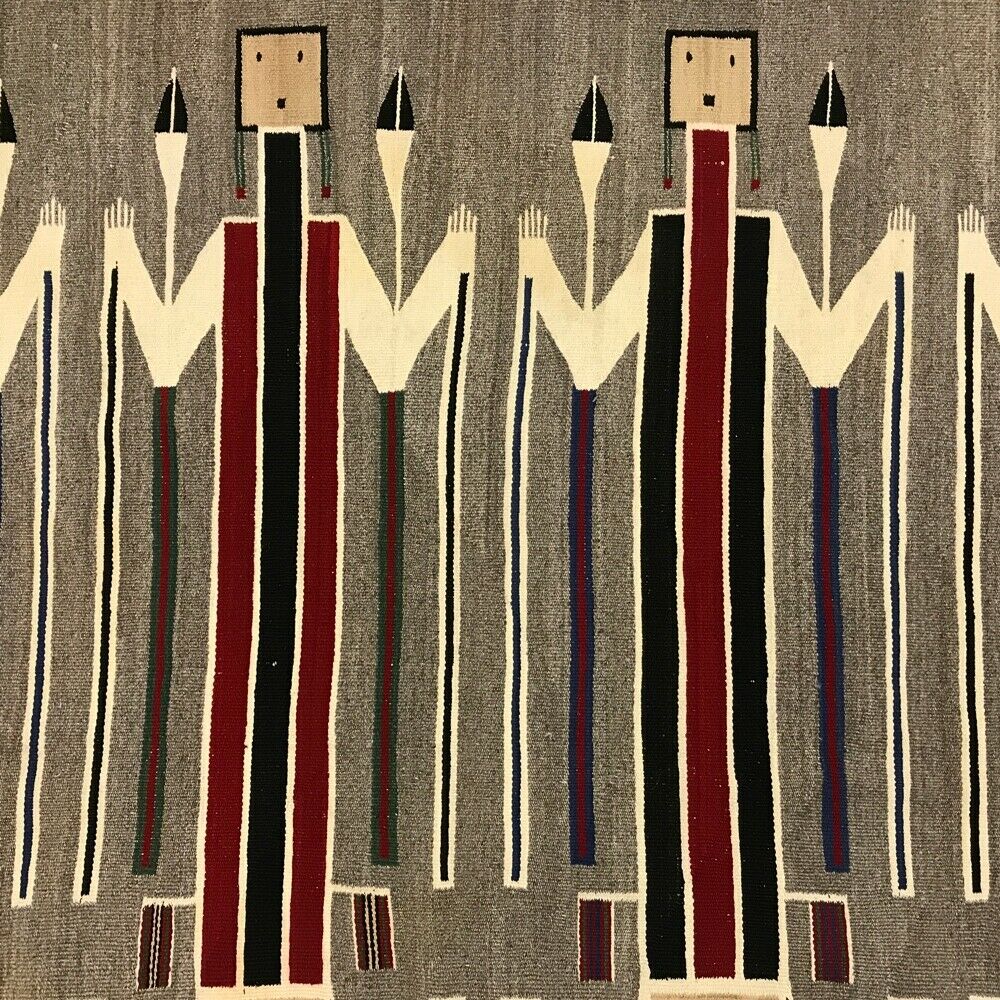LARGE Navajo Yei Pictorial Rug, 69.5" x 127.5", c. 1930s
This weaving is in good condition. There are no holes or signs of moth grazing. There is some very minor spotting near the edges, as well as some slight color run near the bottom edge. There is no staining or fading. There is some slight weft wear to the center and the edges. The warp count is 8, and the weft count is 44, per inch. Acquired from a private collection in Massachusetts. The owner purchased this weaving in the mid-1990s.
Please reference item T91951C-0319-003.
Yei
pattern rugs feature images of the Holy People drawn from ceremonial sand
paintings but do not recreate an entire painting. The closely related
Yeibechai rugs show Navajo dancers in the act of portraying Yeis in
ceremonies. Typically, the Yeis are highly stylized figures with elongated
bodies, short straight legs, and heads facing the viewer. Yebechais have
somewhat more human proportions, usually face sideways, and often have legs
bent in a dancing motion. The earliest Yei rugs usually included one or two
large Yei figures oriented vertically, i.e. parallel with the warp. In some
cases, small Yei images were included in rugs with geometric patterns or
other pictorial elements. Though quite rare, these early types were made over
a period of nearly four decades, falling out of favor by the 1930s. In the
1910s, a very small number of weavers made single figure type rugs which
portrayed not the Navajo Yei, but rather Hopi Katsina figures with
characteristic tableta headdresses.The more common types of Yei and Yeibechai
rugs feature multiple figures oriented parallel with the weft threads so that
the rug appears wider than long when the figures are upright. Two distinct
styles emerged in the 1920s. Those made in the area of Shiprock, New Mexico
tend to have light colored backgrounds with no border, and often use brightly
colored commercial yarns. Yeis and Yeibechais made in the central part of the
reservation, in northeastern Arizona, tend to have dark backgrounds with
simple borders. They are more likely to incorporate natural wool colors and
more subdued chemical shades. Yeis continue to be very popular with
collectors and are now being made in nearly all parts of the reservation.
Medicine
Man Gallery has been in the Antique Native American art business since 1992. We have one of the largest
inventories of Antique Native American art for sale in the country, offering
Navajo Rugs and Blankets, American Pueblo Pottery, Indian Baskets, Hopi
Kachinas, Old Pawn Jewelry, Contemporary Native American Jewelry, and Native
American Beadwork, as well as Ethnographic Art, Western Americana, Art of the
West and Native American Art. Before
purchasing please feel free to contact us with any questions you may have
about the condition of this item; we are happy to send additional images.
50" x 35" artisan rug by Lucy Begay of "Two Grey Hills" (Two Gray Hills)
Rich colors and stunning textile work.
Purchased in 2003 at Cameron Trading Post. Purchase receipt is available.
Specifics
- Culture: Navajo
- Condition: Good condition; please see full description for other details.
- Refund will be given as: Money Back
- Origin: Navajo
- Return shipping will be paid by: Buyer
- Artisan: Navajo
- All returns accepted: Returns Accepted
- Item must be returned within: 14 Days
- Tribal Affiliation: Navajo

